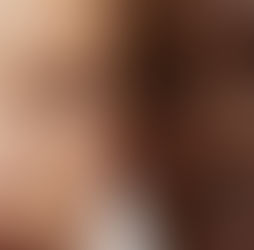Wiederhoeft Spring 2026: Rediscovery in Corsetry and Ceremony
- BY SASHA-LEIGH HODGEN

- Oct 3
- 4 min read

Jackson Wiederhoeft’s Spring 2026 collection, Lost Works, marked a triumphant return after a year of silence. Presented in the designer’s midtown atelier, the show traded grand spectacle for intimacy, allowing guests to lean in close to the intricacy of stitch and shimmer. It was a fitting context for a body of work that was less about volume of looks and more about depth of craft.
Wiederhoeft reflected on the collection with palpable excitement: “It was so joyful to be able to work on these ideas for a year; I took so many risks, and there was so much newness that was exciting and fun for me.” Standout pieces included skirts crafted from fil coupé georgette, woven with a mix of vintage and new metallic threads; a painstaking ten-month process that transformed fabric into art.
This season, the offering was noticeably more focused than previous collections; casual and ready-to-wear pieces were largely set aside, with the spotlight firmly on variations of the classic corseted gown. “The collection is called Lost Works,” Wiederhoeft explained. “It is about a sense of rediscovery. When I was doing research, if I was between two things, I would always try to choose what was unexpected.” Here, every gown, every suit, and every corset became its own world, proof that slowing down can bring clarity of vision.
The collection unfolded like a painter’s study in contrast. Bright golds and champagne lit the runway with regal opulence, recalling the gilded halls of old-world ballrooms. Nude, blush pink, and pistachio green softened the story, lending an air of tender modernity to corseted silhouettes. Black and brown anchored the palette, particularly in structured suiting, while a vivid red broke through with intensity, a fiery punctuation mark in the narrative. Baby blue, chosen for the opening look, shimmered with tasseled embroidery, establishing a mood of rediscovery and optimism. The finale came in white: two gowns that evoked bridal purity, closing the show with a sense of renewal and timeless promise.
Corsetry was the pulse of Lost Works. Wiederhoeft returned to the form again and again, exploring its possibilities across dramatic and intimate scales. Ballgowns swelled outward in architectural grandeur, while column gowns hugged close to the body with sculptural precision. Some corsets were softened by draped georgette, others hardened into sculptural bodices that recalled armor. The dialogue between strict structure and romantic embellishment created tension, the kind of push and pull that defines Wiederhoeft’s aesthetic.
In a striking example, one look paired a corseted bodice with a full skirt glittering in fil coupé brocade, a golden dream of craftsmanship that fused historical silhouettes with modern bravado. Another presented an off-the-shoulder gown drenched in diamanté, lace inserts by the bust offering a tender counterpoint to the brilliance of crystals. Even in quieter moments, such as a blush corset with a slouching pistachio skirt, there was an insistence on form, on structure, on the body as canvas.
Perhaps the most unexpected element of the collection was the introduction of suiting and sturdier fabrics rarely associated with eveningwear. A black wool twill suit, cut with crisp severity, stood in sharp contrast to the more fantastical gowns. A blue printed suit, adorned with shadowy branches projected from the designer’s studio experiments, carried a touch of the poetic, while a gold jacket-and-skirt ensemble reinforced the regal spirit.
Menswear, too, resurfaced in the collection: two sharp suits styled with loafers, one with a classic double-breasted cut and the other with a softer, more Wiederhoeftian twist in fabric and finish. These pieces suggested a broadening vision, a step toward versatility without losing the couture edge.
The collection’s defining moments were anchored in unforgettable looks: The Golden Ballgown: A strapless corset in pale yellow melted seamlessly into a sweeping skirt embroidered with golden filigree. Its volume and surface shimmer recalled 18th-century court dressing, reimagined for a modern stage. This was grandeur distilled into fabric.
The Crimson Column: A strapless red gown, its bodice glittering like lacquer and its skirt traced with sparkling embroidery, brought cinematic intensity. The sculpted waistline was precise, almost architectural, commanding attention with its severity. The Blush and Pistachio Duo: A shimmering pink corset with a soft, draped neckline paired with a flowing pistachio-green skirt struck a balance between delicacy and sensuality. It was among the collection’s quieter statements, proof that softness can carry just as much power as spectacle.
What made "Lost Works" remarkable was the juxtaposition of grandeur and intimacy. Though the staging was pared back, the garments themselves brimmed with formality and ceremony. Most looks were paired with sharp pointed heels or buckle-up shoes, reinforcing the poised silhouette of the wearer. Even the collection’s lone mini dress, a lacy slip of a piece, was delivered with elegance rather than frivolity. The overall impression was one of regality, not distant or untouchable, but deeply personal, as if each garment carried a private history ready to be rediscovered.
With Lost Works, Jackson Wiederhoeft made a powerful case for slowing down and looking closer. By focusing the eye on detail, silhouette, and material, the collection revealed itself as both a reflection on history and a leap toward the future. It was a season of rediscovery, of corsetry as art form, of suiting as expansion, of bridal as a bridge between fantasy and reality. And in that rediscovery, Wiederhoeft seemed to find something even more vital: an evolving voice, confident enough to shed the spectacle and let the work speak for itself.












































































































